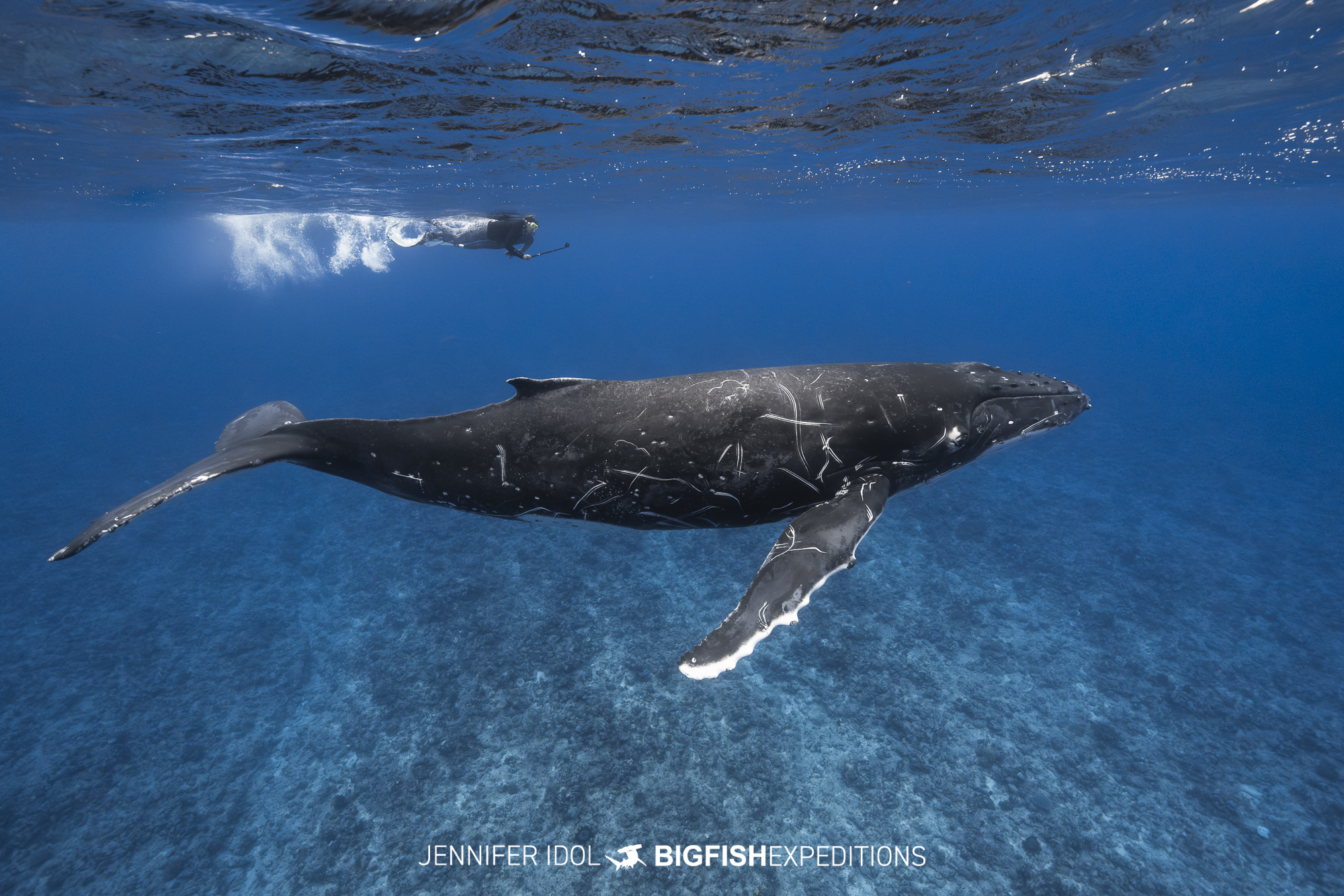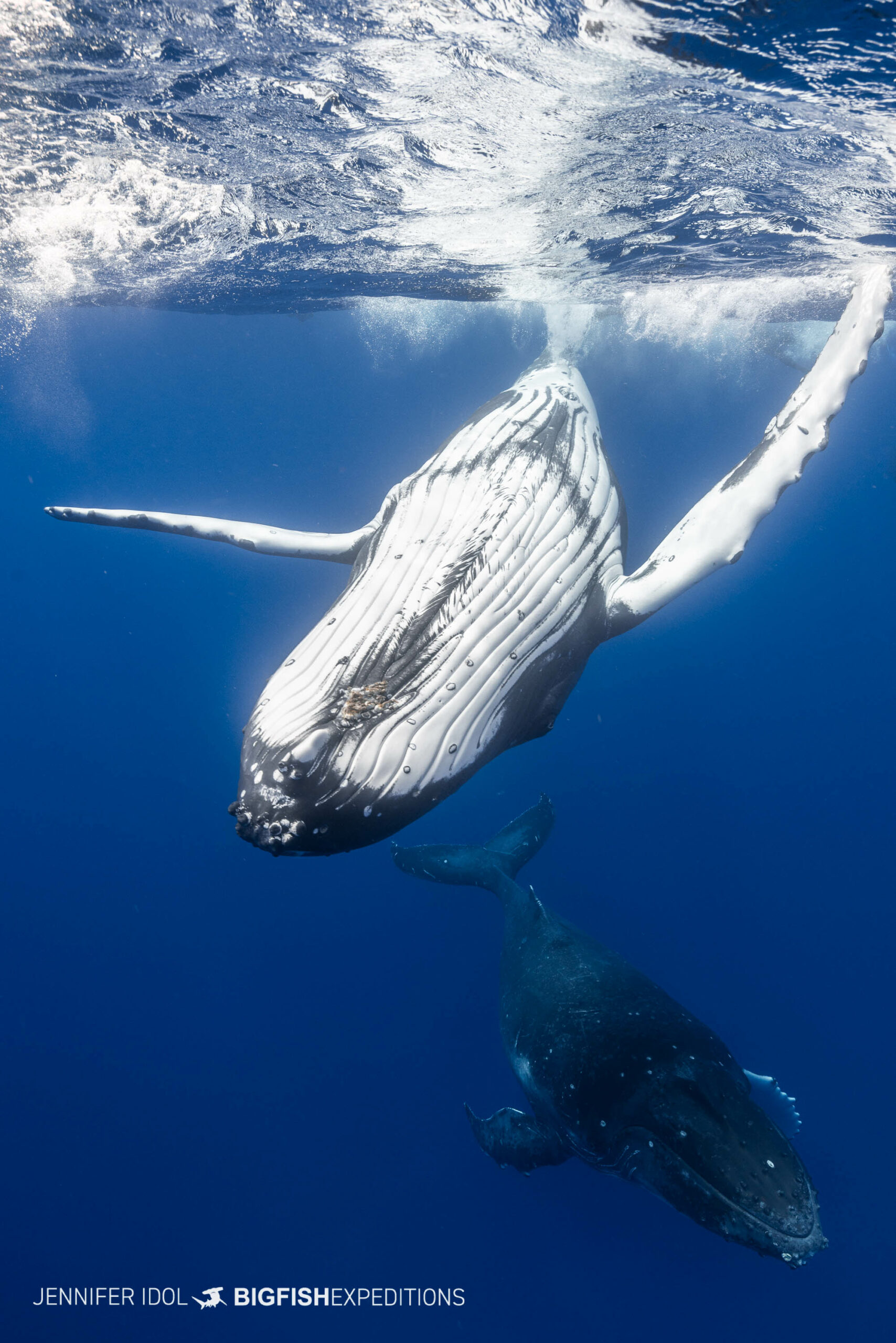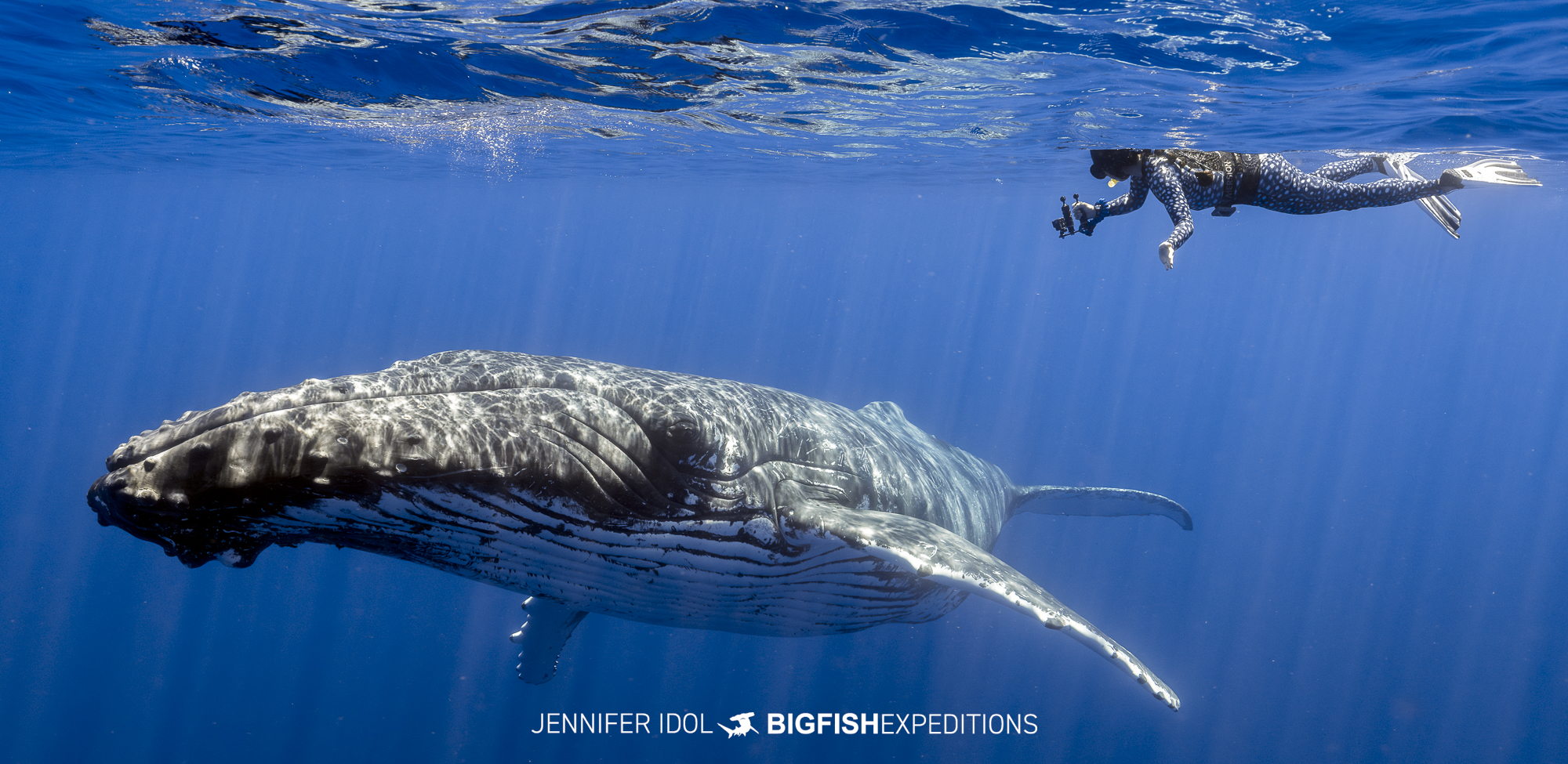
Our 2024 Humpback Whale Snorkeling Expedition was an adventure
by Jennifer Idol
Our favorite trips are those that touch our heartstrings. From the nurturing moments of mother humpback whales with their calves to the excitement of two male humpback whales tumbling together, this trip is at the top of my list.
Since we work to provide encounters with wild animals, we never truly know what we will experience or see. What is in our control is that we select the optimal times and destinations to encounter wild animals with the strongest possibility for success. French Polynesia is one of those optimal destinations and a special place in so many ways. We kicked this year off with some strong winds, great visibility, and bouncy whales. As the trip went on, the winds calmed and with it, the mothers and their calves. We were able to capture everything from exciting moments to calm encounters.
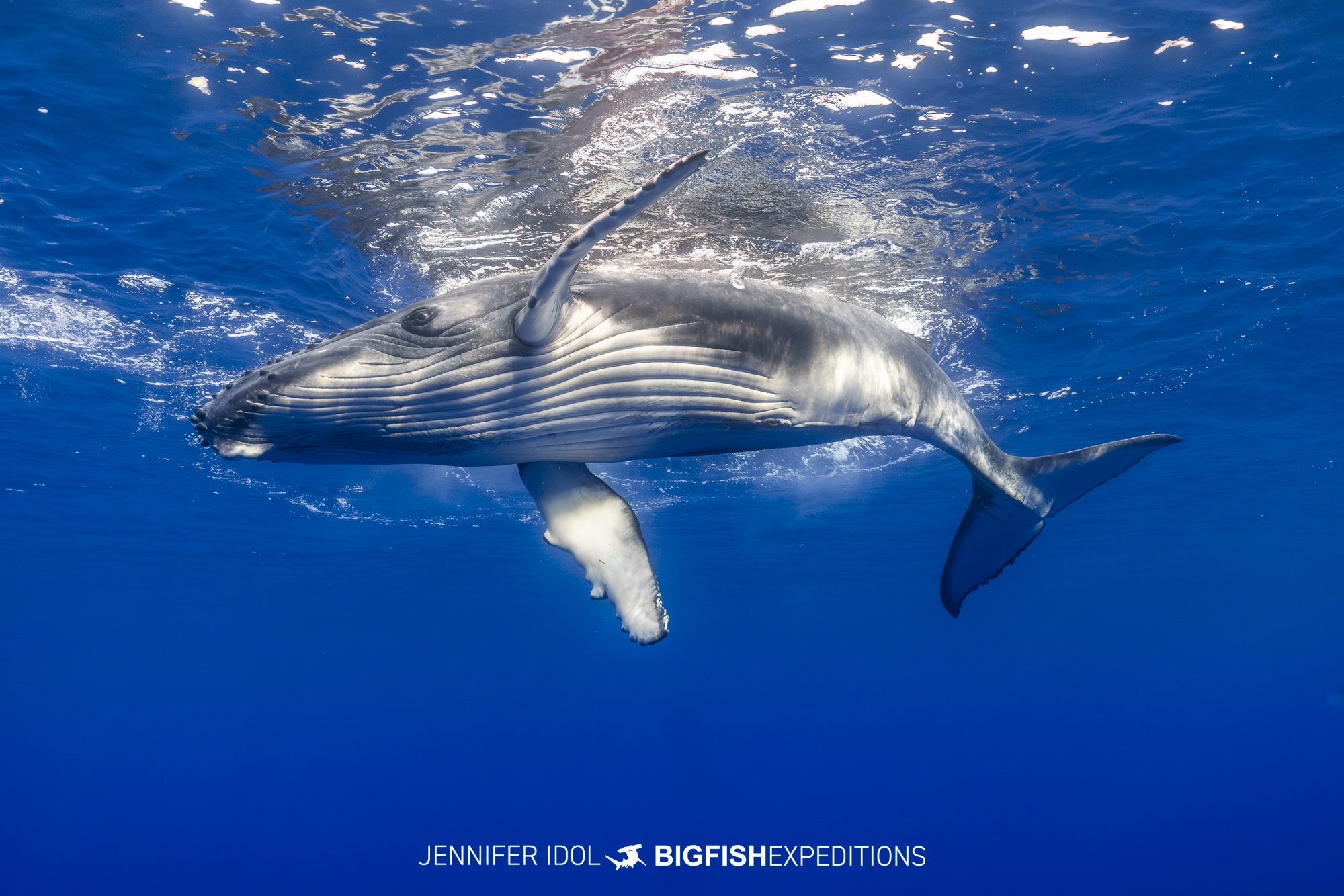
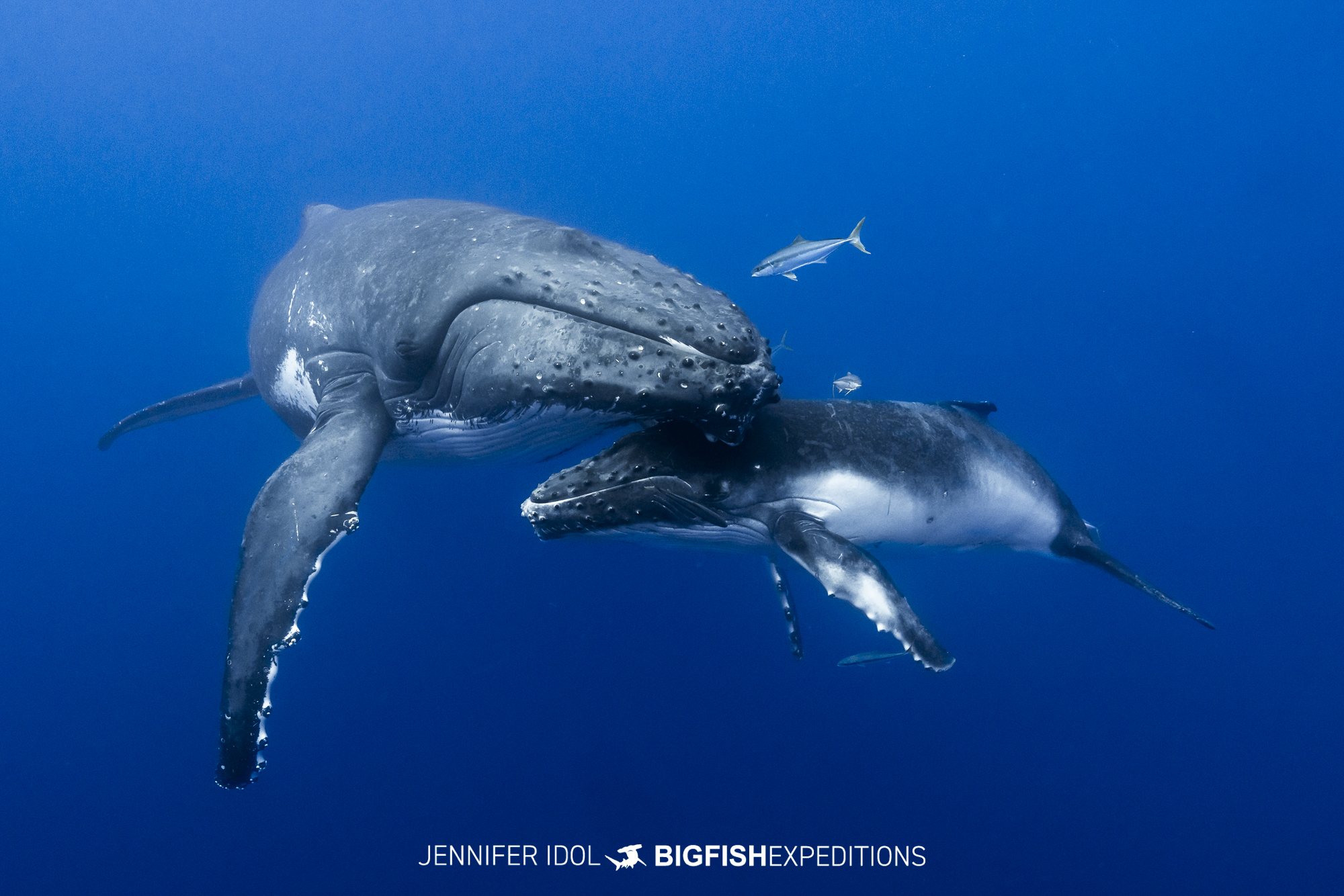
The Austral archipelago
This group of islands lies south of Tahiti and is home to a special island called Rurutu, shaped like Africa. I encourage guests to book the additional island tour because it provides great insight into the island’s history and context for where we swim with the whales.
The tour takes us around the island perimeter through the three major towns on the island, past Monster Cave, through the most untouched parts of the island, to some remote lagoons, beyond the Taro fields, and looking down to Avera. We finished our tour at Mitterrand Cave this year before enjoying dinner at our lodge. François Mitterrand served as president of France and visited this island in 1990, bringing visibility to this largely untouched island.
Taro is the primary product and is served regularly at meals. The food provided is grown on this lush island, which we oft remarked reminds us of the Jurassic era due to its ferns and verdant trees. The French pastry influence left everyone more than satiated.
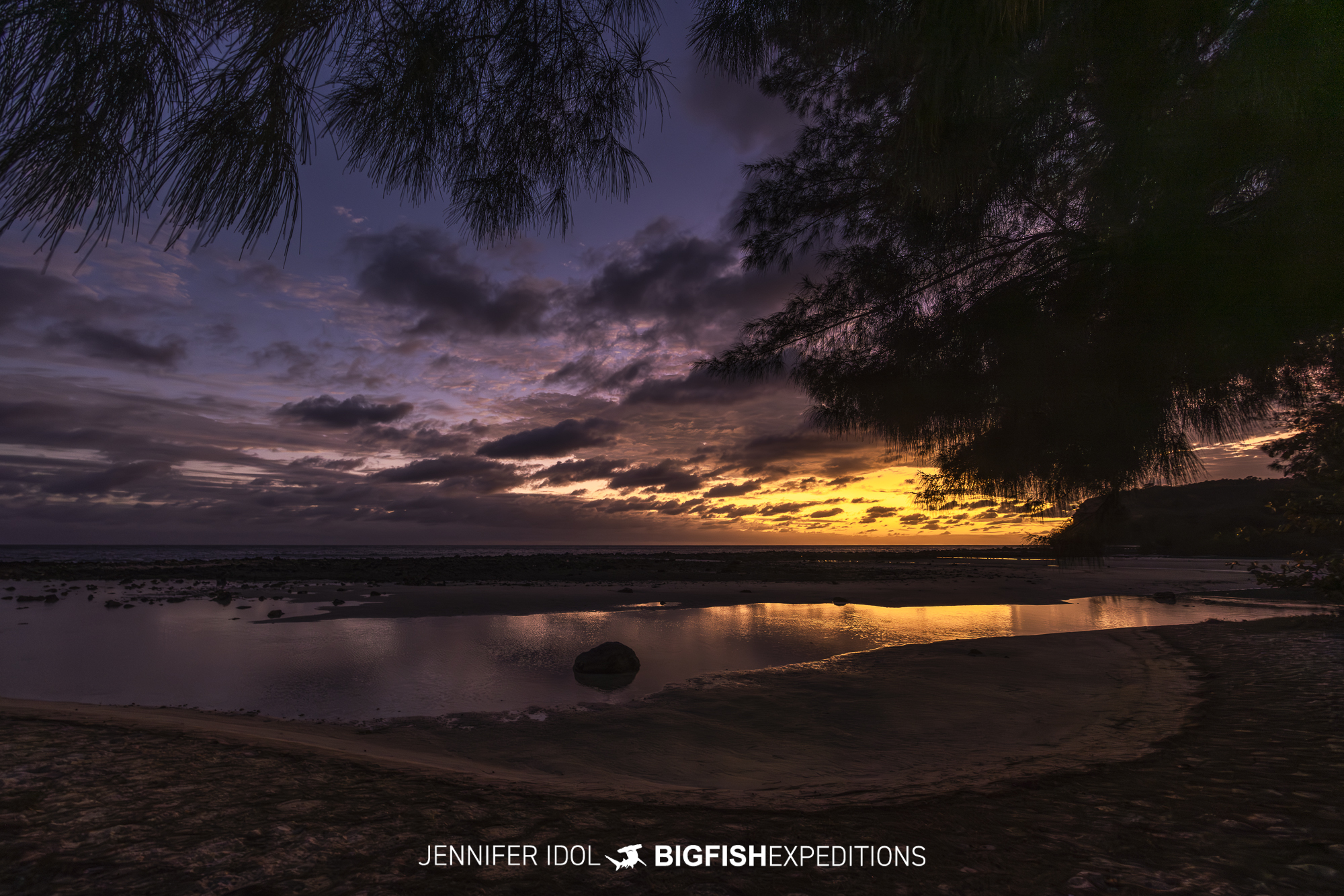
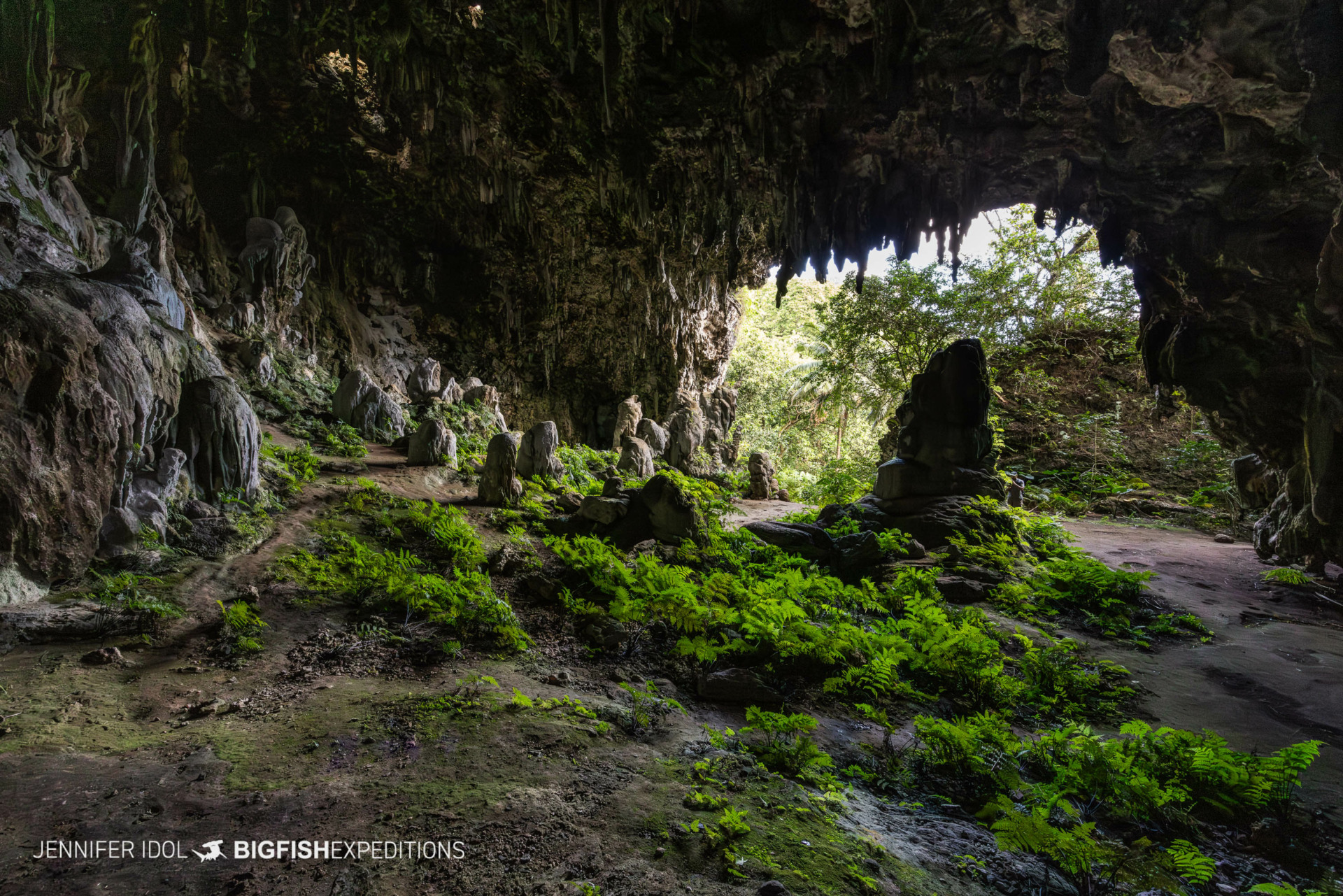
A great migration
The southern population of humpback whales travels here every year to give birth and raise their young. While it is too cold and harsh in Antarctica when there is also little remaining food, they make the 7,000 km (4,500 mi) journey to French Polynesia. This is important for their survival and for the new generation.
It is also an ideal opportunity to observe whales that are relatively stationary. For a whale, personal space can consist of an entire island distance apart. Older calves that return with their mothers may still follow them and be in their presence, but at a distance of an island away.
With an 11 month gestation period, whales impregnated here will then also be able to give birth here the following year. It is thought that on average, they give birth every two to three years, with some mothers birthing annually.
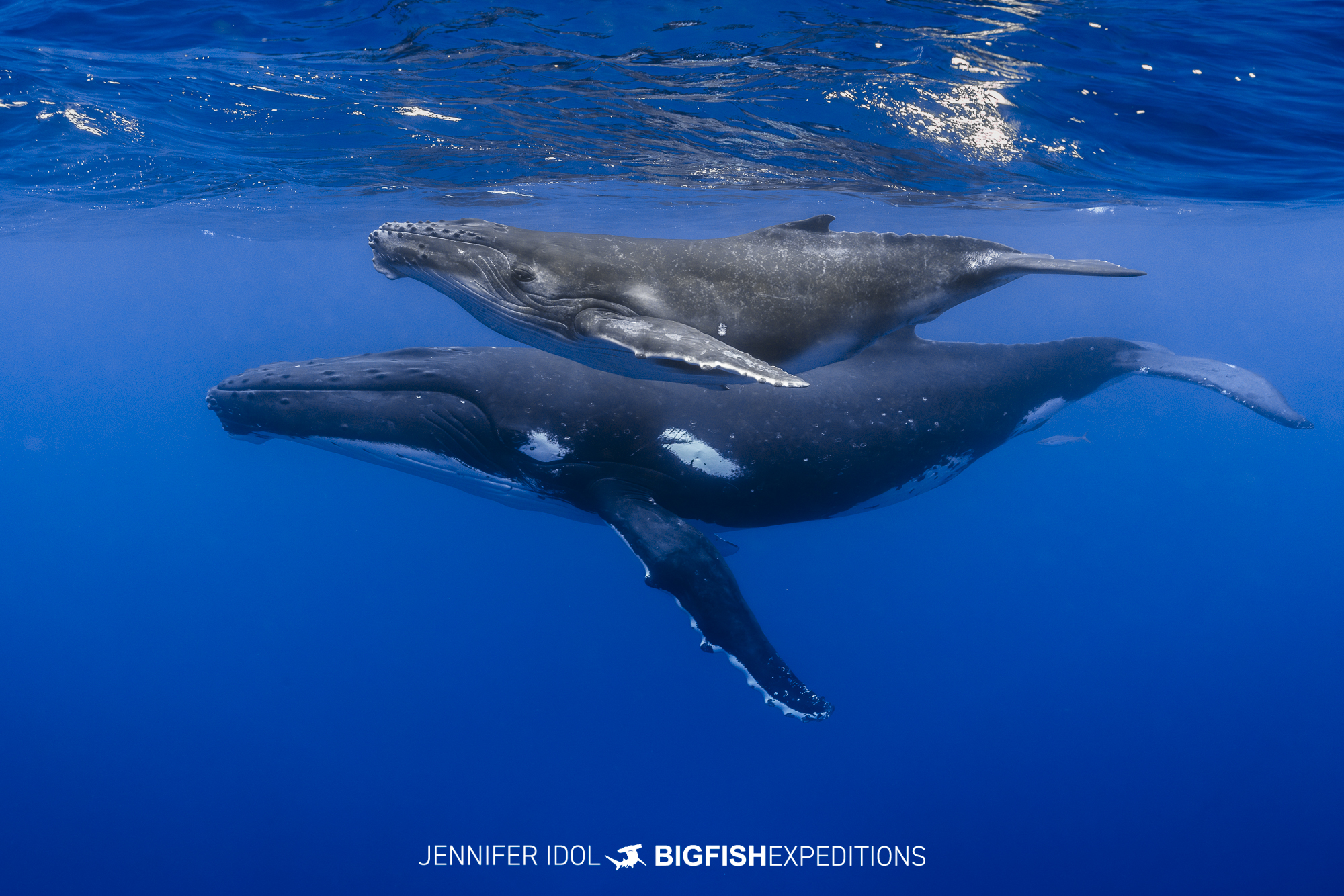
Competition or play?
At birth, humpback calves reach 5 meters (16 feet) and adult whales whales that reach 12 to 16 meters (39 to 52 feet) in length. These are large animals. Our wide angle lenses make them appear much smaller than they are in reality and with a hefty weight of 36 metric tons, they displace a large volume of water. When we observe whales engaged in what appears to be playful behavior, we are careful to be mindful of this size.
Two males can sleep together and suddenly awake into a thrilling state of play or competition. When vying for a female a male can position itself between us and the female coming quite close. These whales were sleeping and erupted into a fast paced play that we watched swim off together.
The southern population of humpback feature more white markings than the North Pacific or North Atlantic populations, so when they rise up and expose their bellies it is beautiful to capture the light.
Below this, a male spiraled below me showing his belly as he chased after a female in definitive pursuit.
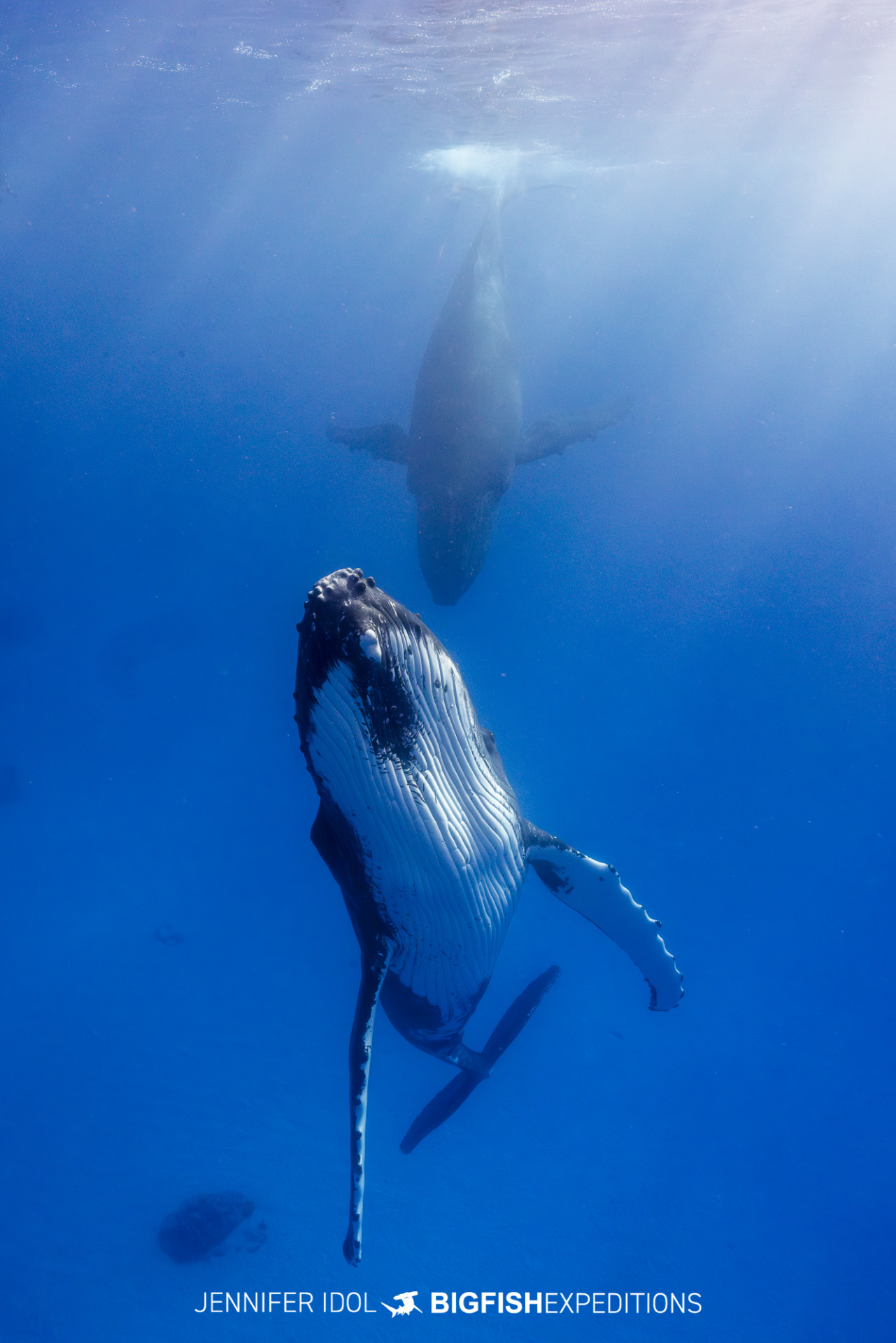
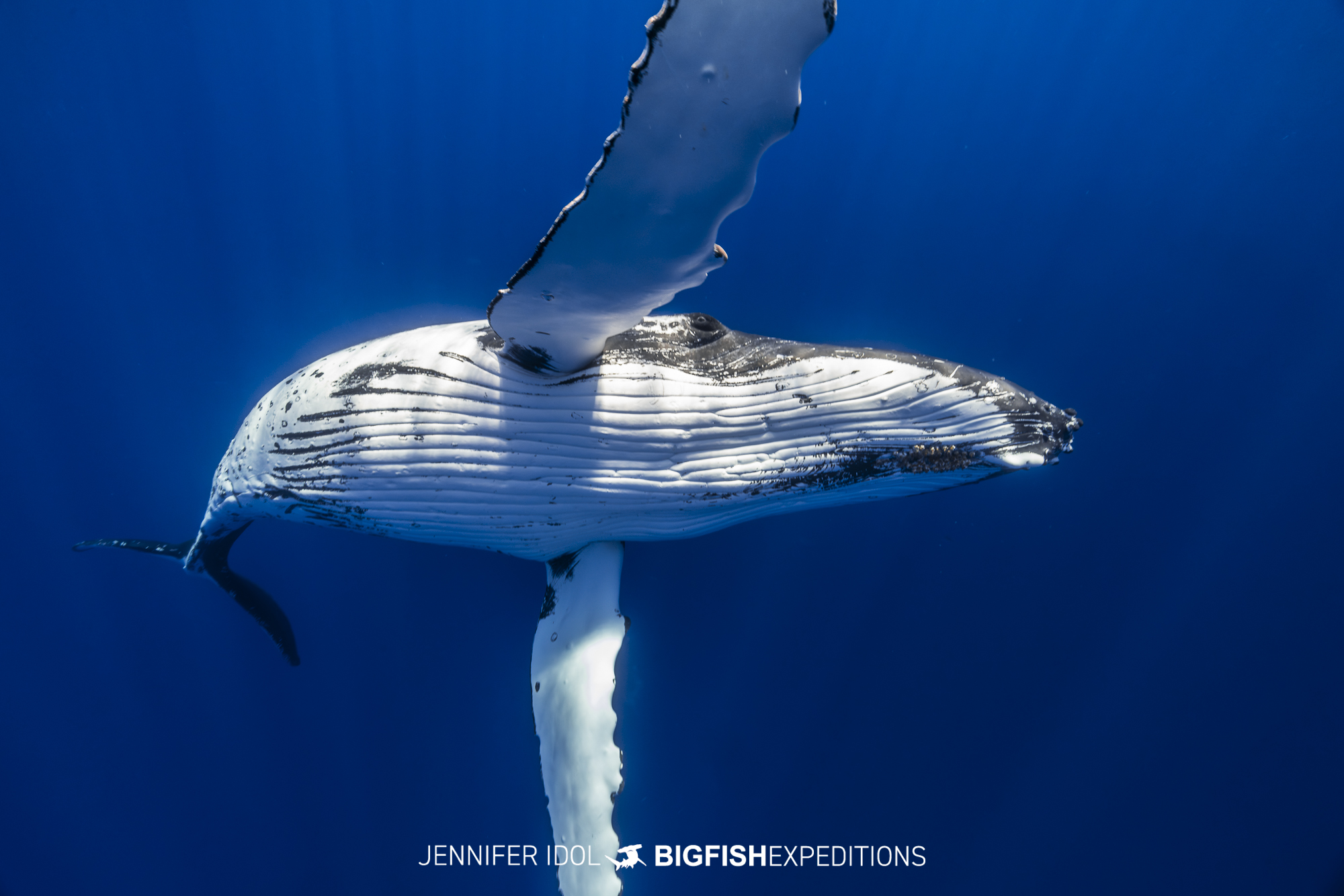
Intimate moments
Mother humpbacks are tired from having their energy depleted by birthing, feeding, and raising a bouncing baby whale. We observed many times a calf would poke the mother to awaken and prod her into play. She would gently guide the baby up and back down as if to say would you please go to sleep.
The mother is intently aware even while sleeping, keeping half her brain awake to protect her calf from competitive male whales or other potential threats. She often positions herself so that the baby is on the far side of any observers and especially away from a male. When a male approaches, it can seem like the mother and calf awaken and move off for no apparent reason. Wait, and then you can see sometimes the male in hot pursuit.
The whales very much are allowing us to observe them. It is readily apparently that when they want to move, they can do so intently. We are calm and quiet in the water to promote the best encounters and to allow the whales to remain calm.
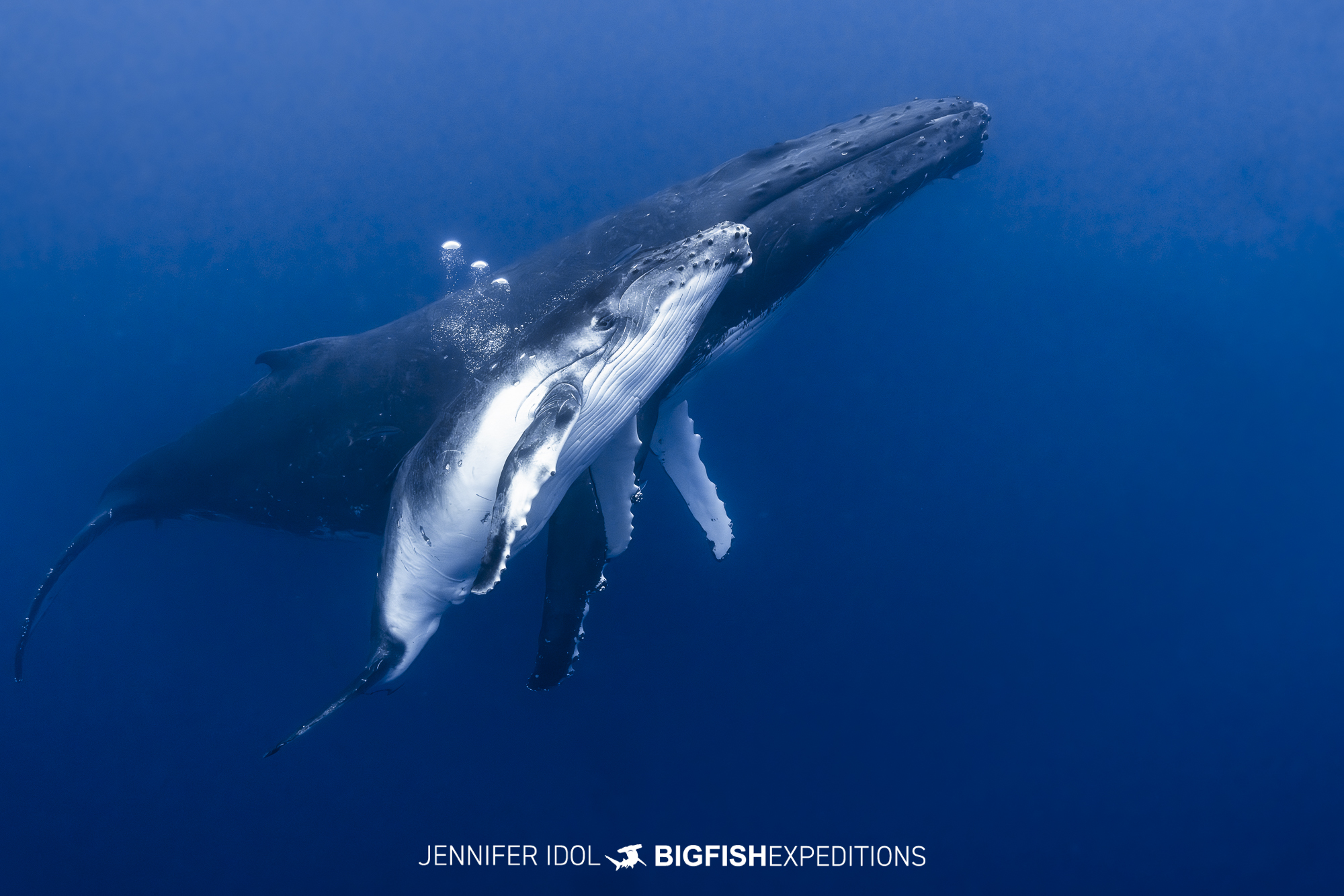
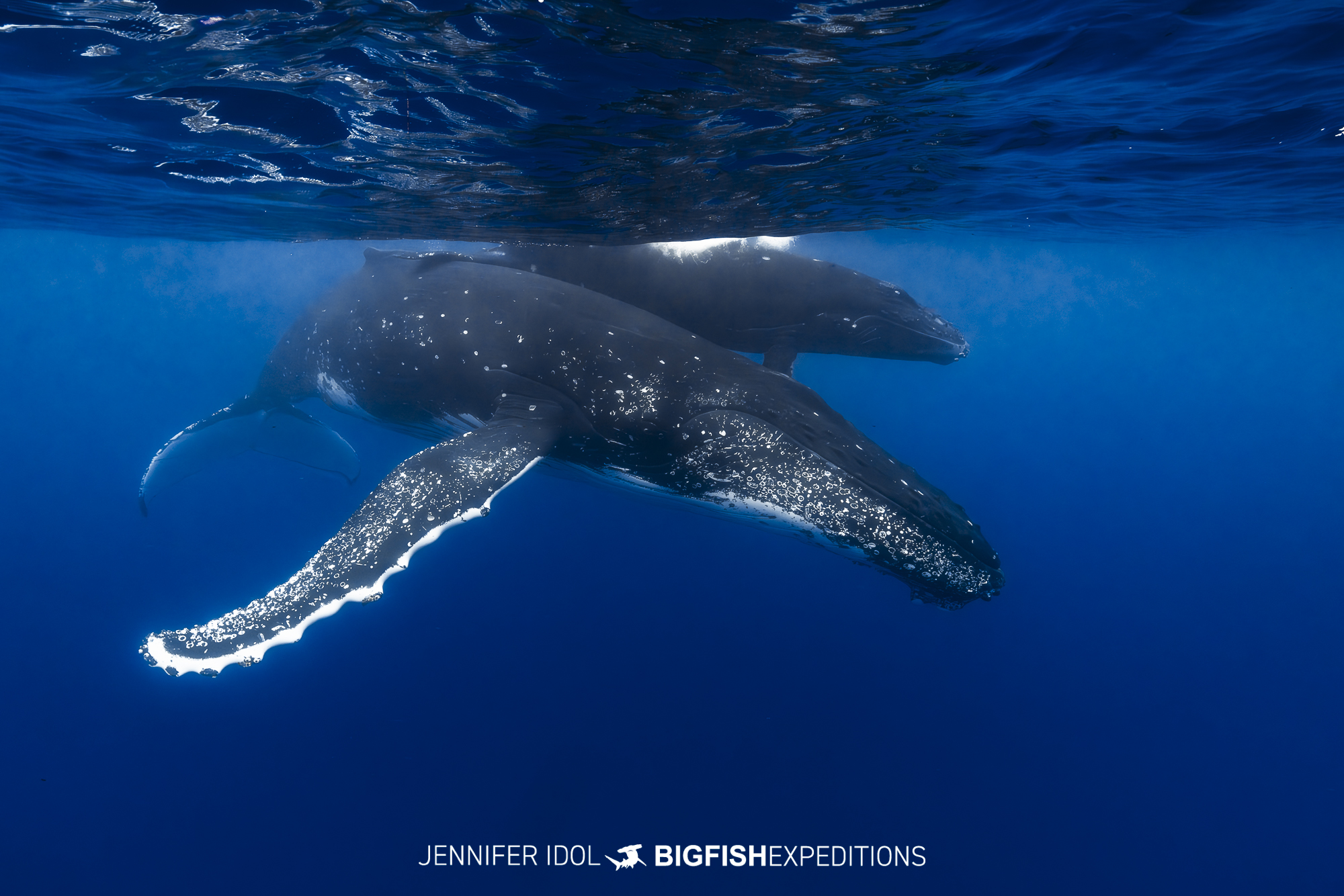
Big babies
Calves are the most thrilling encounters because they’re wild and unpredictable. They can see us as playthings and even try to herd us as if it’s a game. When a one-ton pickup truck comes crashing down, we are in awe. We observed breaches, with a little wiggle maneuver before they launch, and pectoral and tail slapping. Calves learn every behavior they need to survive while they are raised in Rurutu.
It is amazing to see the babies up close with their smooth skin not yet covered in barnacles. We found the patterns on each whale impressive and beautiful, with one calf featuring a striped marking.
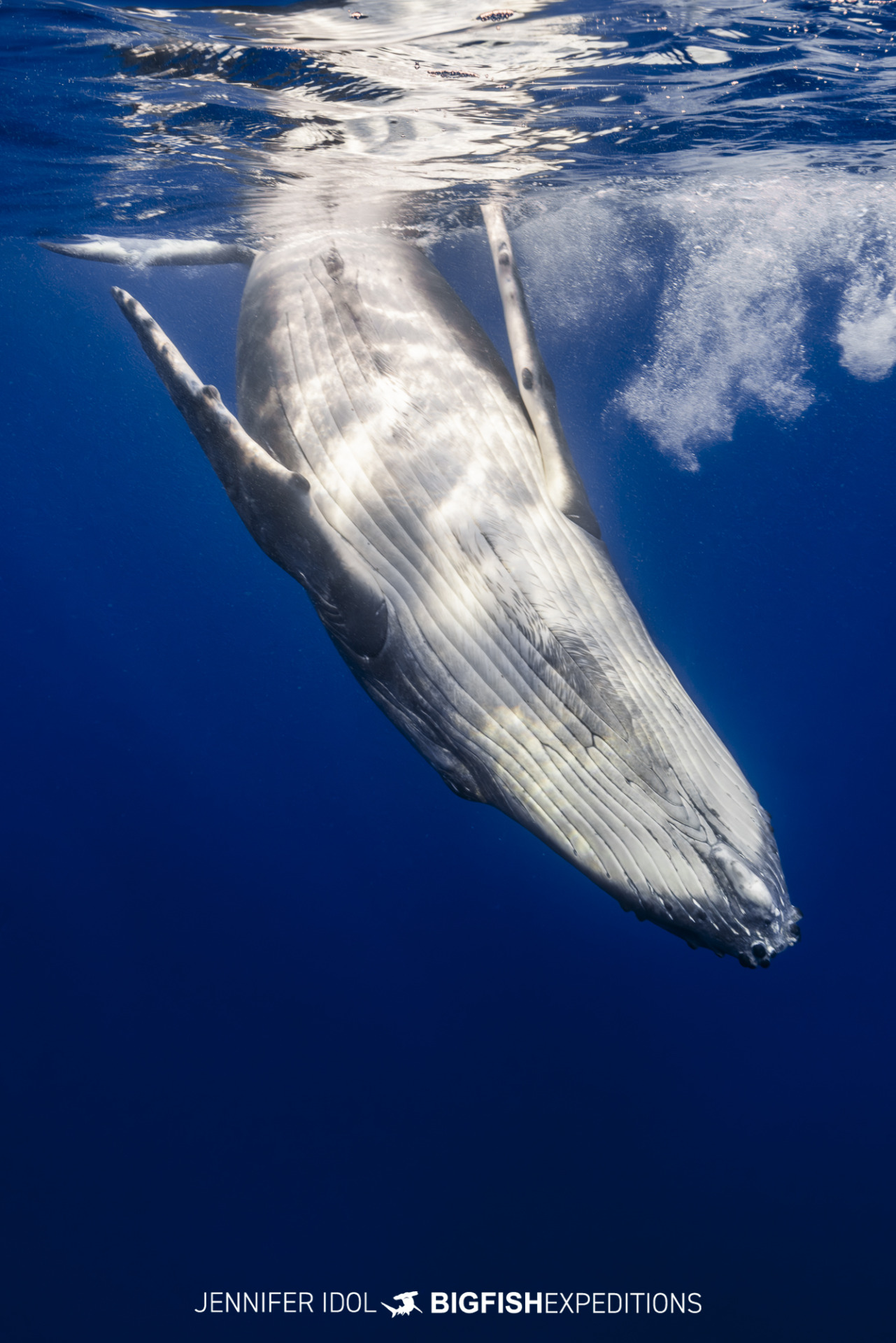
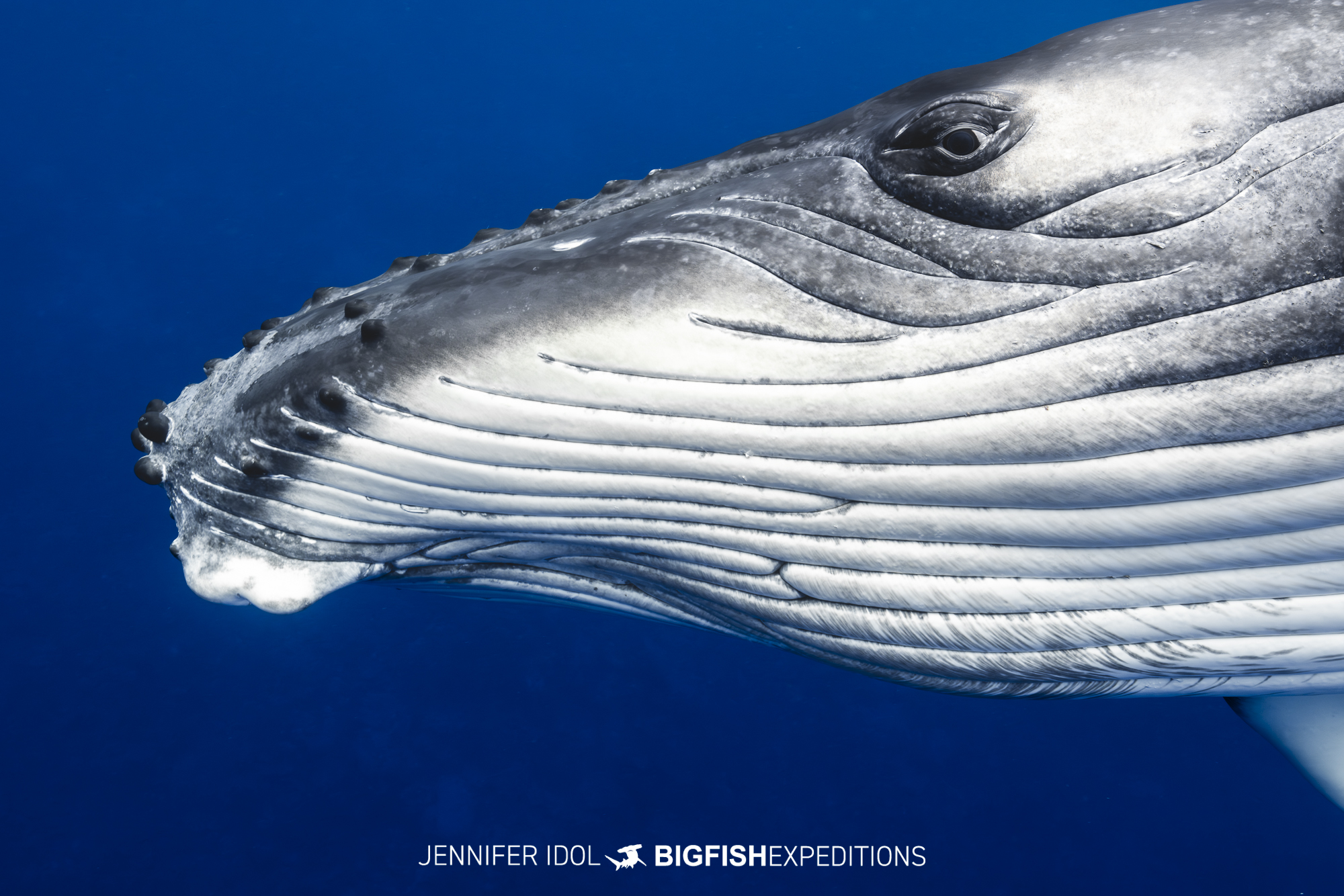
It’s all about the babies
Calves have a special relationship with their mothers. When they are sleeping beneath them, they will circle and rest under the mother’s pectoral fin or her chin as if to reassure the mother that they are safe and present. It appears to be a tender moment. When scarlike markings appear on babies, it is from barnacles on the mother that scratch the baby during the tender love their mothers provide.
Sometimes, babies are also naughty. We’ve seen curious babies bee line away from their mothers straight toward us. These are exciting moments for us as they provide close encounters. We have seen mothers recall their babies and grunt at them if they’re particularly troublesome.
Not all males are bad for mothers and calves. When a male calve becomes an escort, he will fight any male to maintain his favor with the mother. It can be good to have company, although he may not let the female settle as often as she would like.
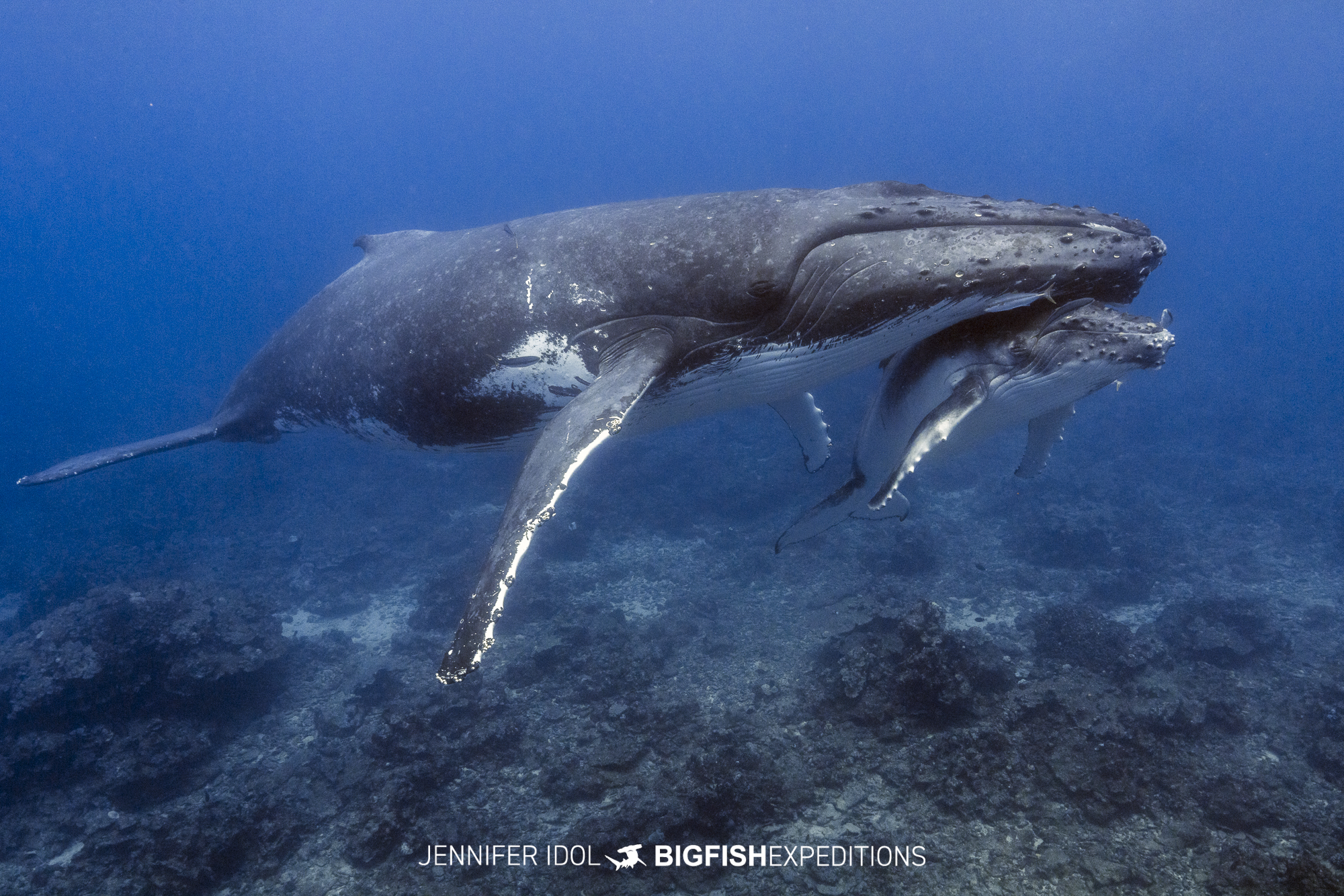
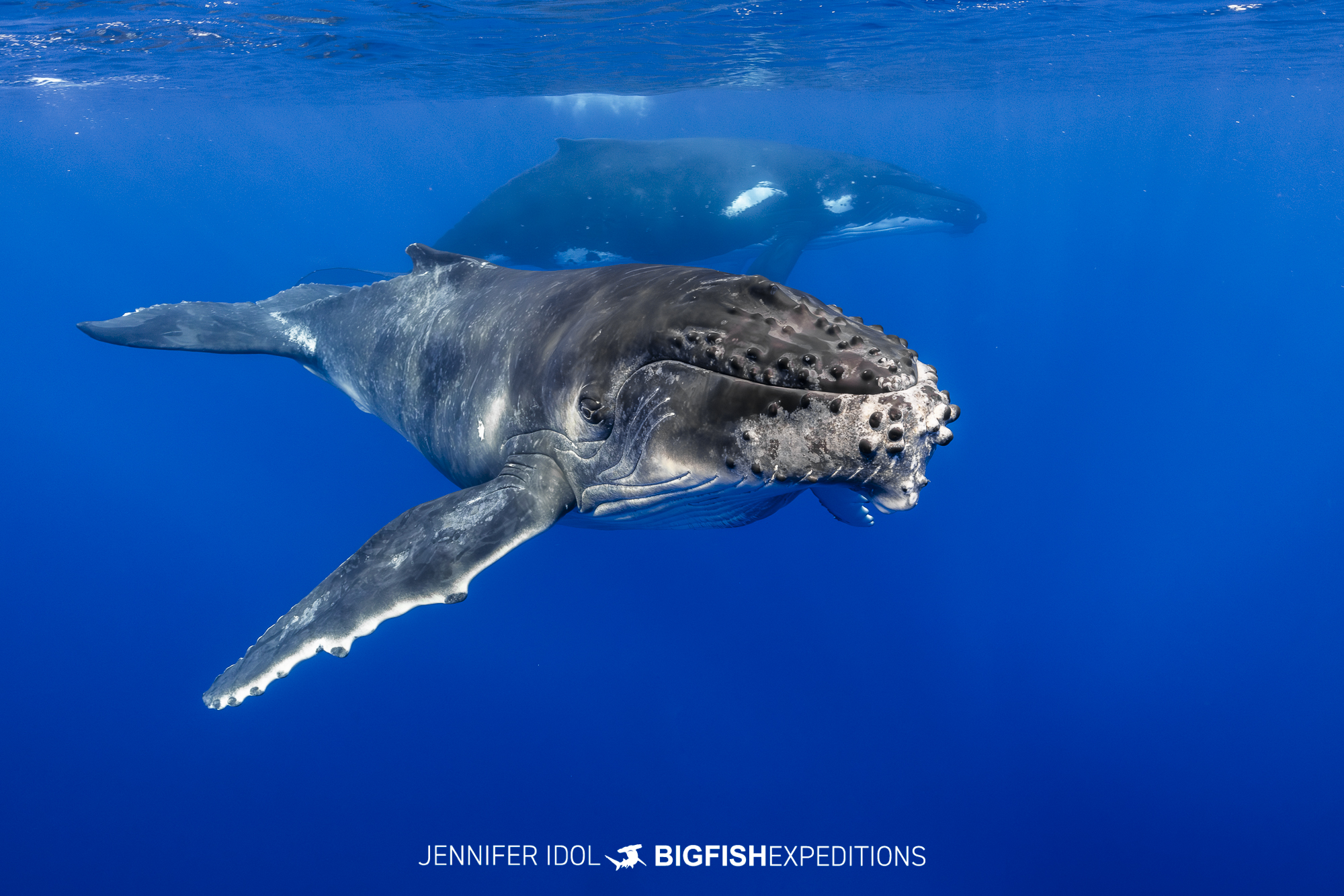
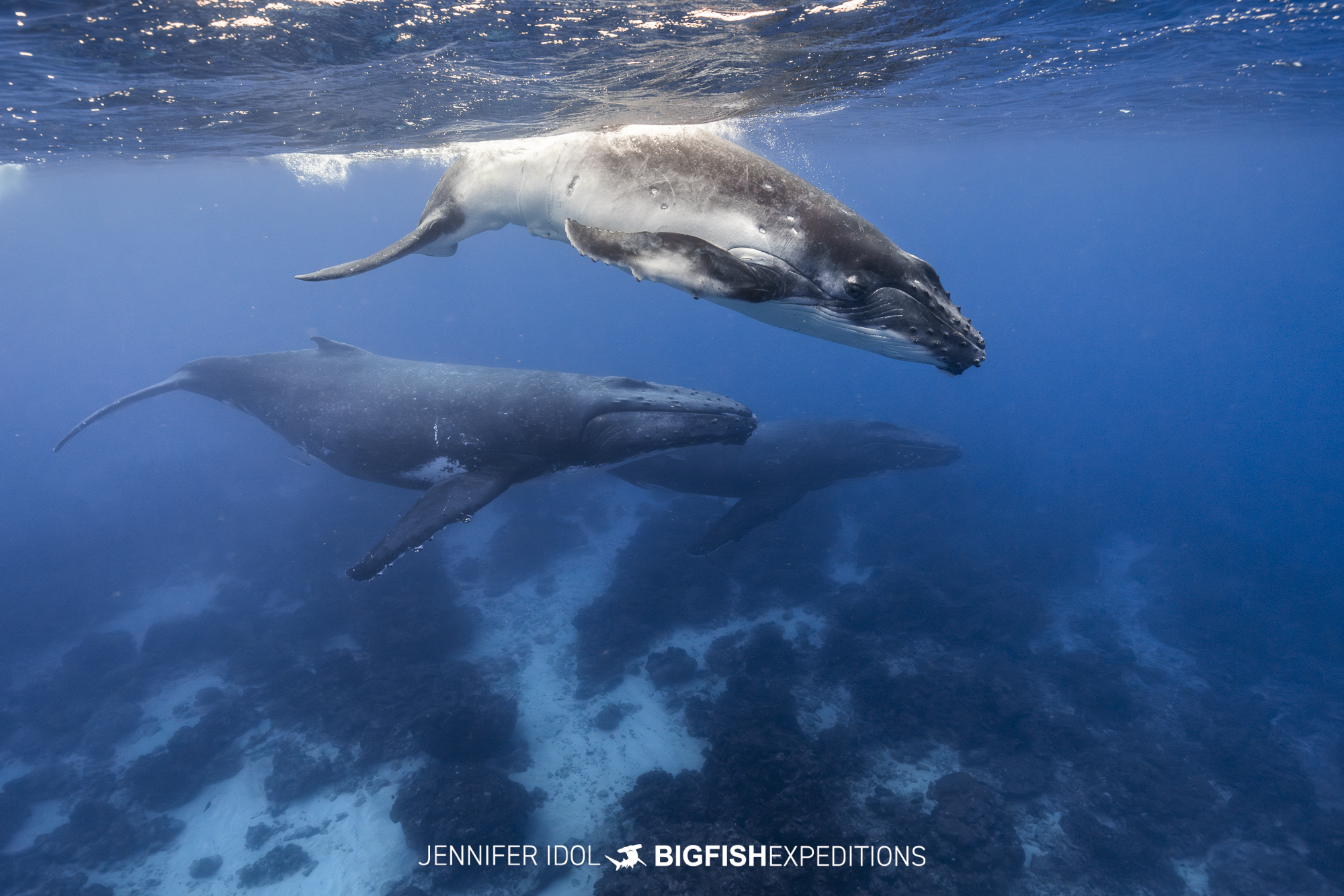
The most amazing experience
We delighted in every moment and every encounter. It’s truly a monumental experience. There is never enough time with these magical mammals, but alas we had to bid them adieu until next year. We are very much looking forward to next year’s adventures.
Although 2025 is booked, we have availability in 2026. We do keep a waitlist for any booked trip in the event that availability opens.
Join trip leader Jennifer Idol for a week in the company of playful, gentle giants: Humpback whale snorkeling encounters
